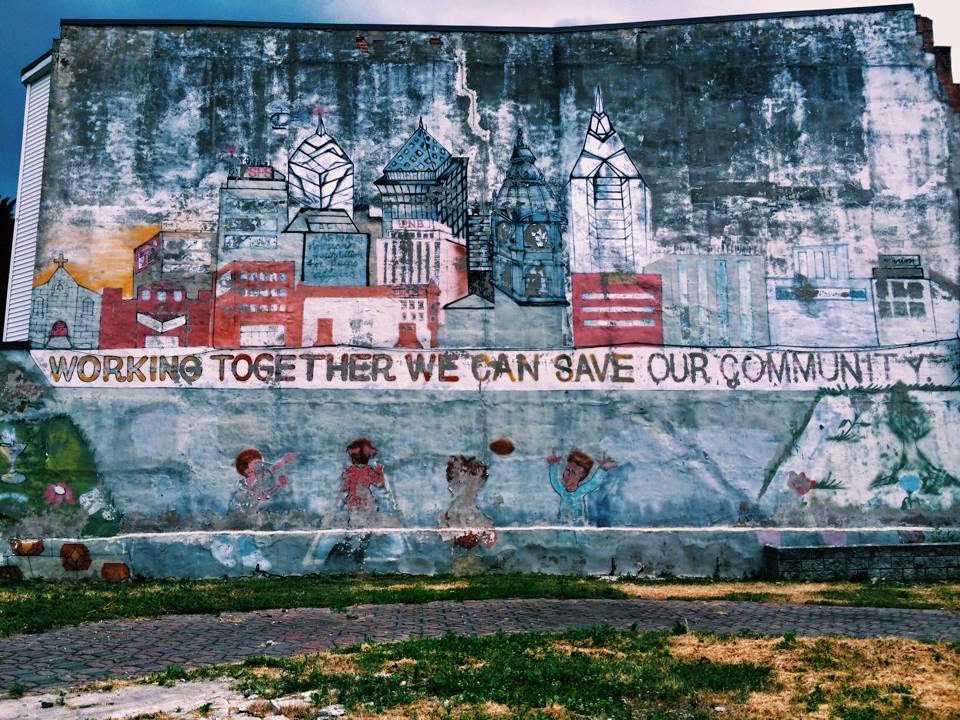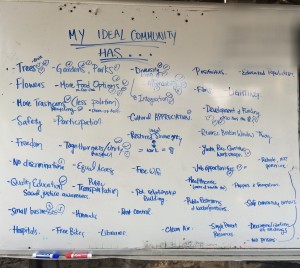Planting the Seeds of Change: how youth involvement feeds families and promotes environmental justice across the country

About the Author: Maya Bernstein Schalet is a youth organizer with the youth-led nonprofit New York 2 X Coalition, a network of young people working together to combat environmental and food injustice through urban farming and community organizing. She attends Wesleyan University and works for the Green Belt Movement.
As a high school organizer with New York 2X Coalition (NY2X), it was challenging to successfully coordinate a non-profit organization while also being a full time student. After meeting Matthew Tejada, the Director of the EPA’s Office of Environmental Justice, I felt reinvigorated because, in speaking candidly about the environmental injustices facing communities across the United States, he urged us to take action to protect and improve our communities.
NY2X is a youth-led organization that mobilizes individuals across New York City to take on local environmental challenges. Leadership is passed down annually from generation to generation. Every year, we organize service trips that support sustainable solutions to environmental challenges in New York City, New Orleans, Philadelphia, and Albuquerque.
Far too often, low-income communities of color are burdened by sites such as sewage treatment plants, factories, and garbage dumps, which pollute the water, air, and land. The neighborhoods in New Orleans, Albuquerque, and North Philadelphia where we work are all predominantly low-income, minority neighborhoods where fancy health food stores and green spaces like parks and gardens are rare. Through our work, we support these neighborhoods by working on urban farms and building green spaces.
Urban farms are places where community members can take control of their health and the health of their environment. The EPA hosts similar programs, such as the Urban Environmental Program or the Brownfields Community Supported Agriculture initiatives, which strive to enhance the quality of life for urban residents by building community capacity through urban agriculture projects.

With these types of programs, people can grow their own food and turn fallow land into thriving green space. Additionally, urban farms serve as centers for community organizing. If one feels empowered by taking control of what they eat and the health of their environment, they can be empowered in many other ways to work for their communities in positive ways.
 On any given day during a service trip, you could find us composting, harvesting, weeding, painting, or doing maintenance on the farm. In addition to making the environment a cleaner, healthier place to live, these jobs teach participants that it is possible to take real action to solve huge issues like food inequity. Our participants learn, while toiling over the compost pile and dividing a field of dirt into neat rows, that change is possible with determination and teamwork. We see with our own eyes that it’s possible for empty lots to become gardens that provide healthy food, employment opportunities, and safe community spaces to neighborhoods that are too often ignored by those in power.
On any given day during a service trip, you could find us composting, harvesting, weeding, painting, or doing maintenance on the farm. In addition to making the environment a cleaner, healthier place to live, these jobs teach participants that it is possible to take real action to solve huge issues like food inequity. Our participants learn, while toiling over the compost pile and dividing a field of dirt into neat rows, that change is possible with determination and teamwork. We see with our own eyes that it’s possible for empty lots to become gardens that provide healthy food, employment opportunities, and safe community spaces to neighborhoods that are too often ignored by those in power.
 It is extremely important to us that our participants understand the connection between urban farming and social justice, so the organizers lead social justice workshops every day with a heavy emphasis on how food injustice and environmental injustice relate to other social injustices.
It is extremely important to us that our participants understand the connection between urban farming and social justice, so the organizers lead social justice workshops every day with a heavy emphasis on how food injustice and environmental injustice relate to other social injustices.
We discuss how low income and minority communities disproportionally bear the burden of these environmental harms. And we strive to improve these situations by supporting local communities in identifying ways to make change and which methods will create a just society.

By the end of one of our trips, each participant is equipped with both a deep knowledge of injustice and the tools to make a difference. Everyone involved in these projects plays a beneficial role, whether it be the youth leader or the community member, in helping to educate others. And in the end, I truly believe that it is the cross-generational collaboration that these projects inspire that is key to creating a sustainable model for achieving environmental justice today and tomorrow.



Oct 29, 2016 @ 15:48:17
WORKING WITH TEENAGERS AND BATTLING AGAINST NON JUSTICE ENVIRONMENTAL. SOWING SEEDS OF CHANGE IN YOUNGS SEARCHING JUSTICE. .